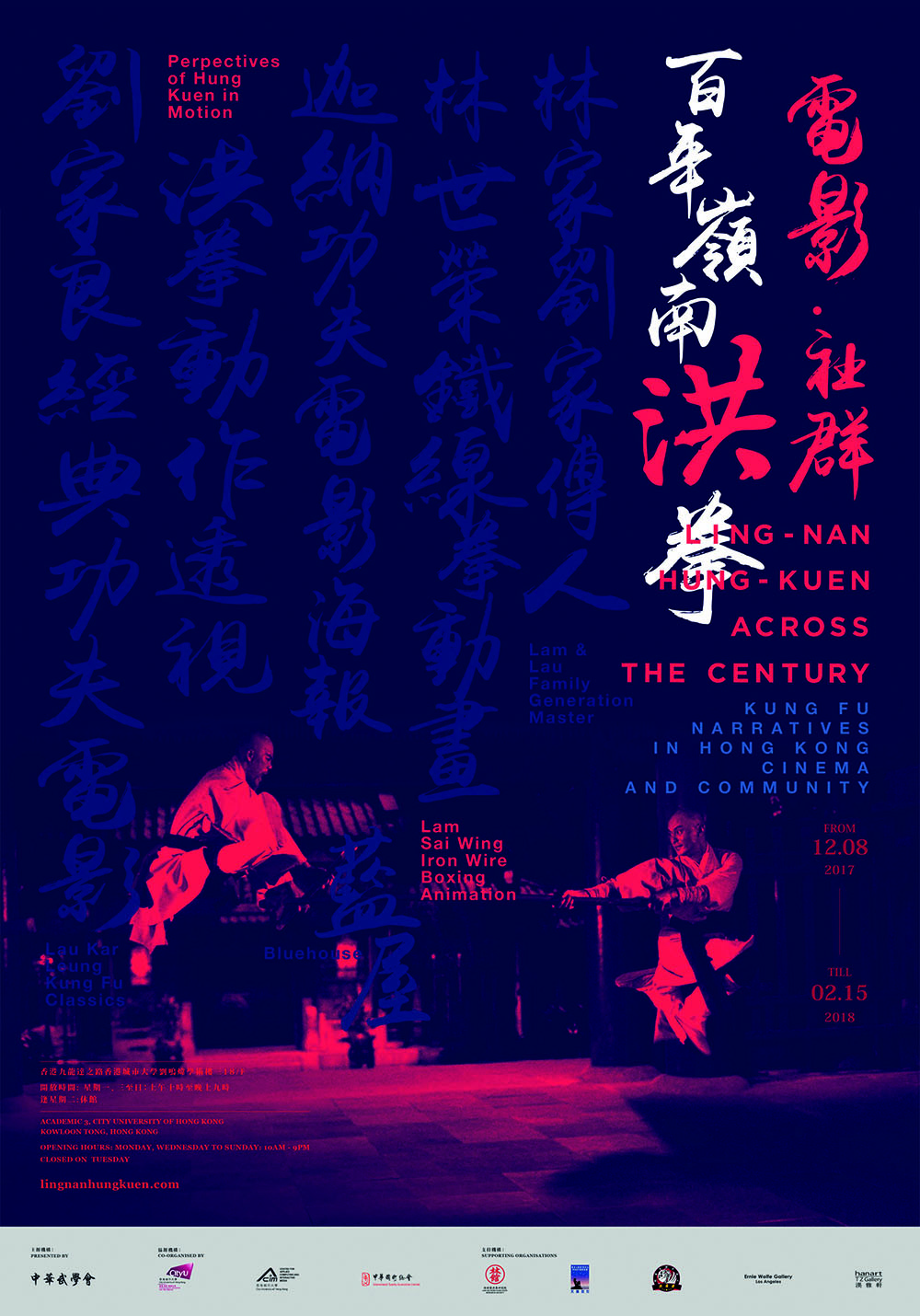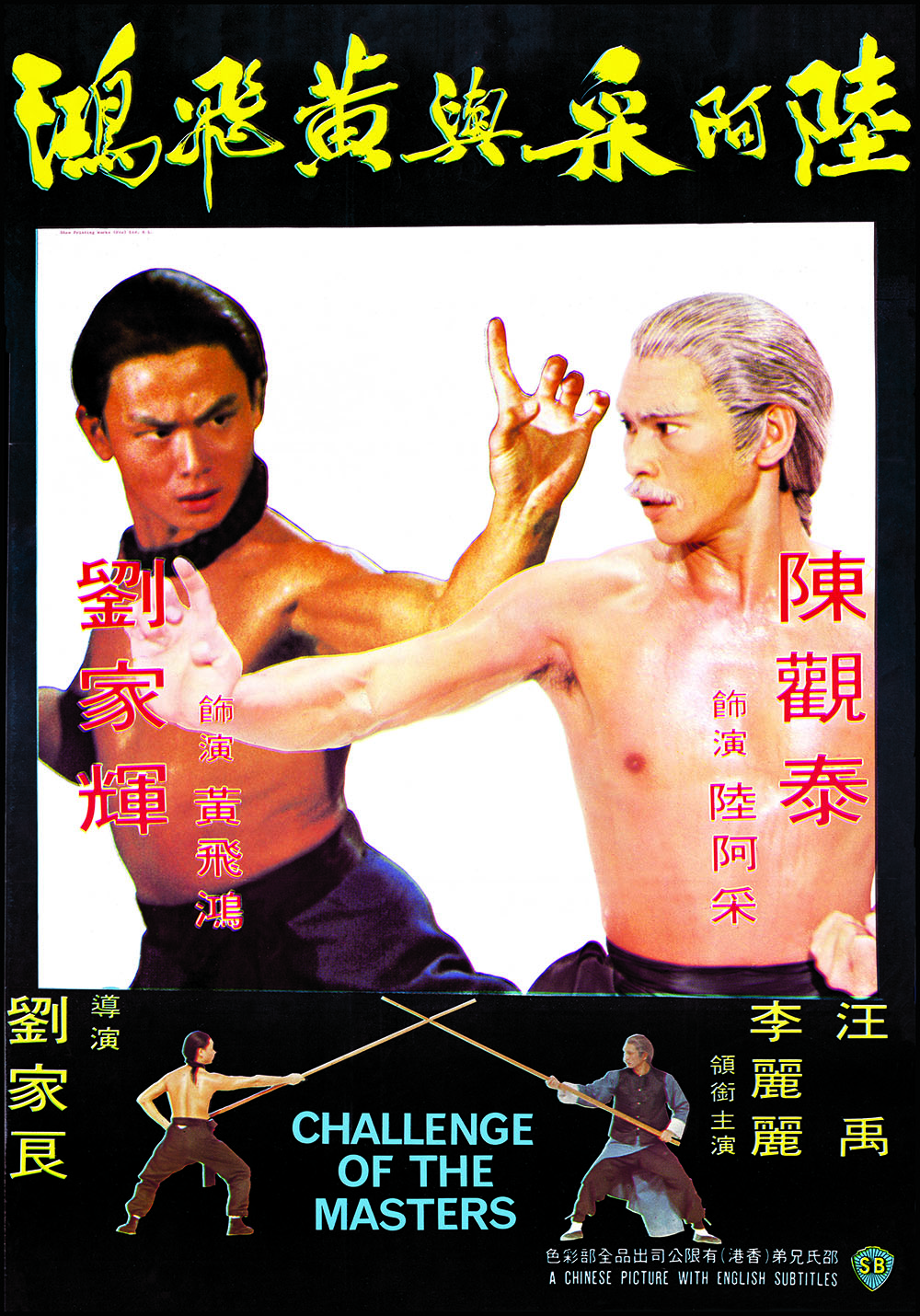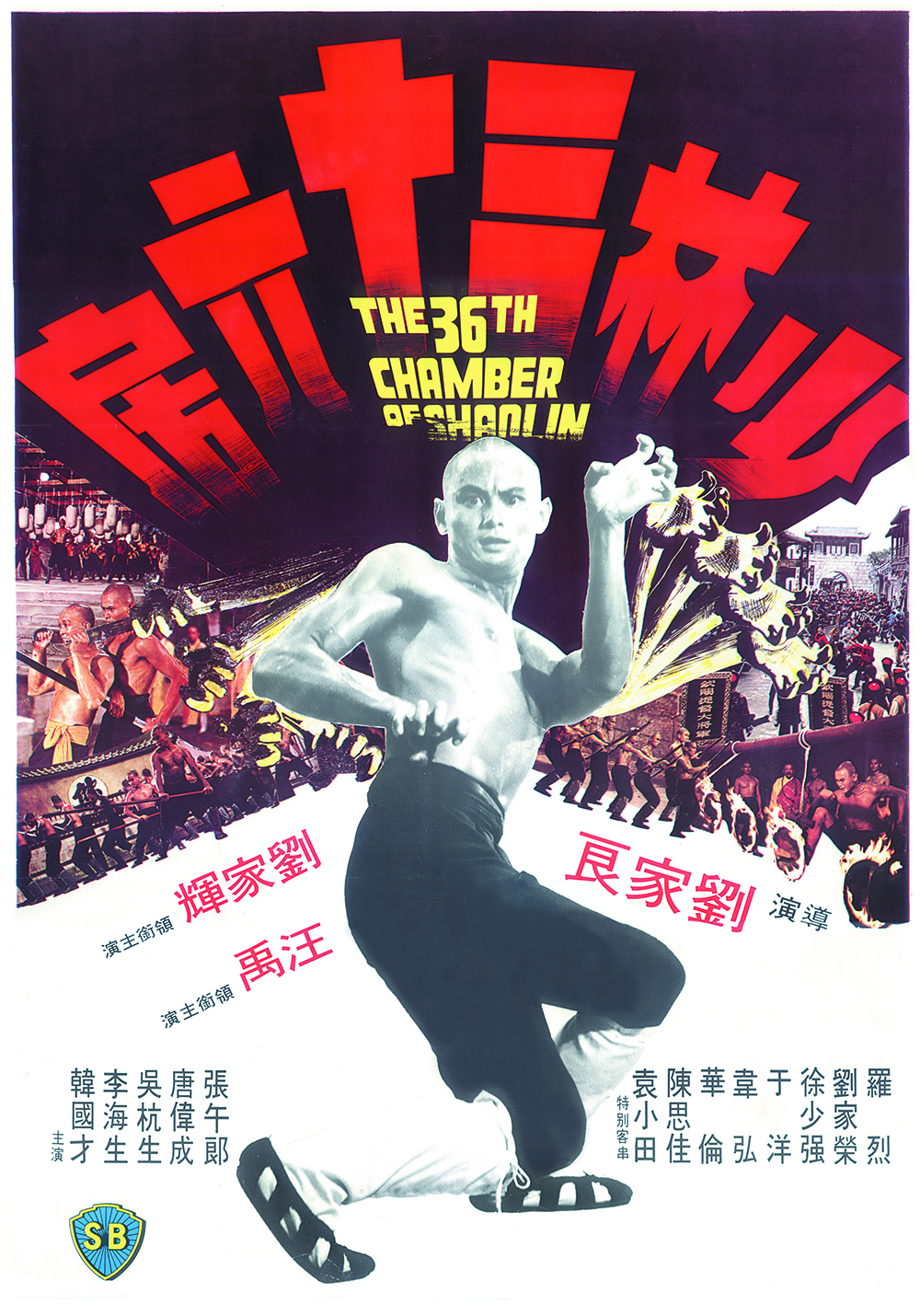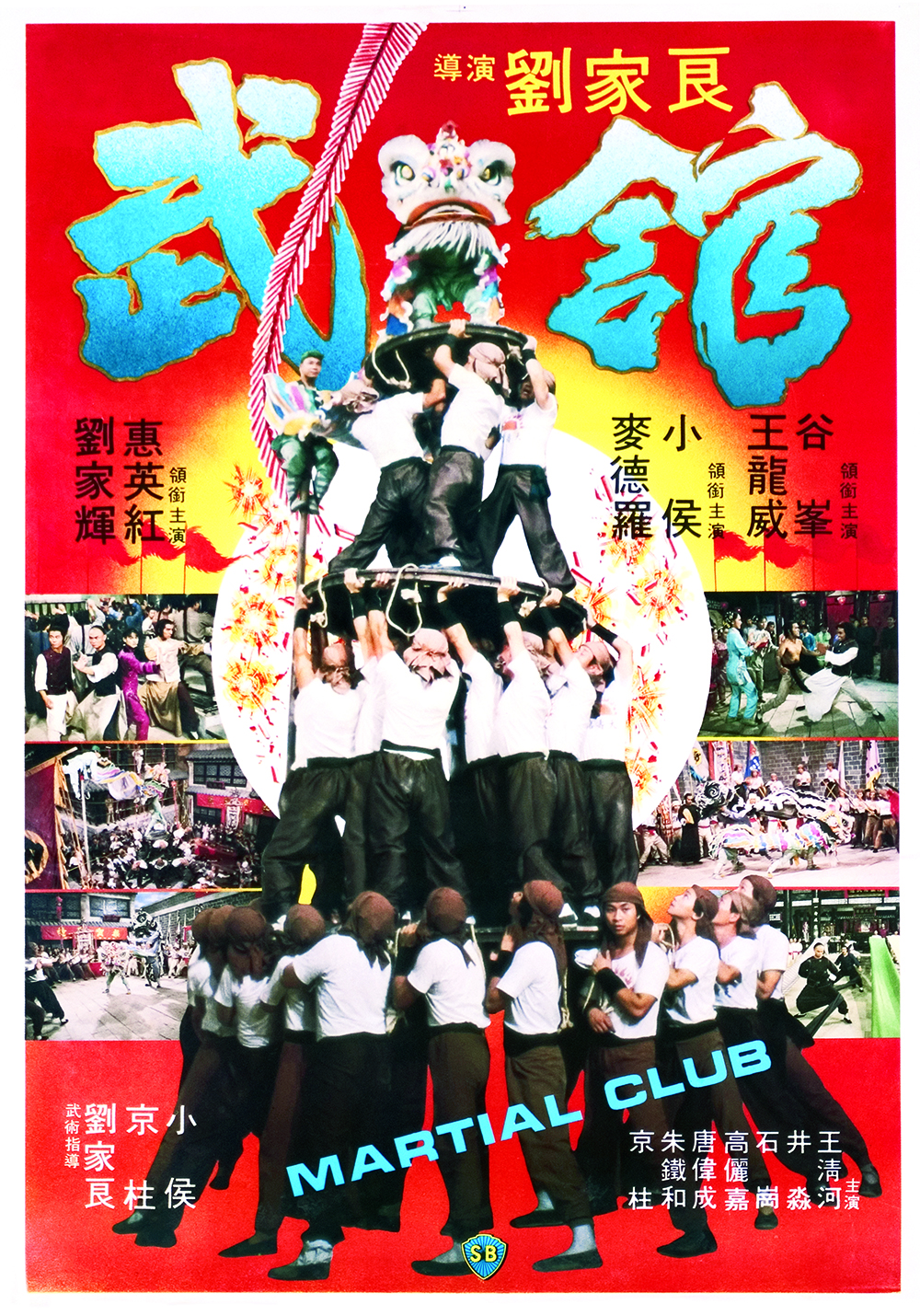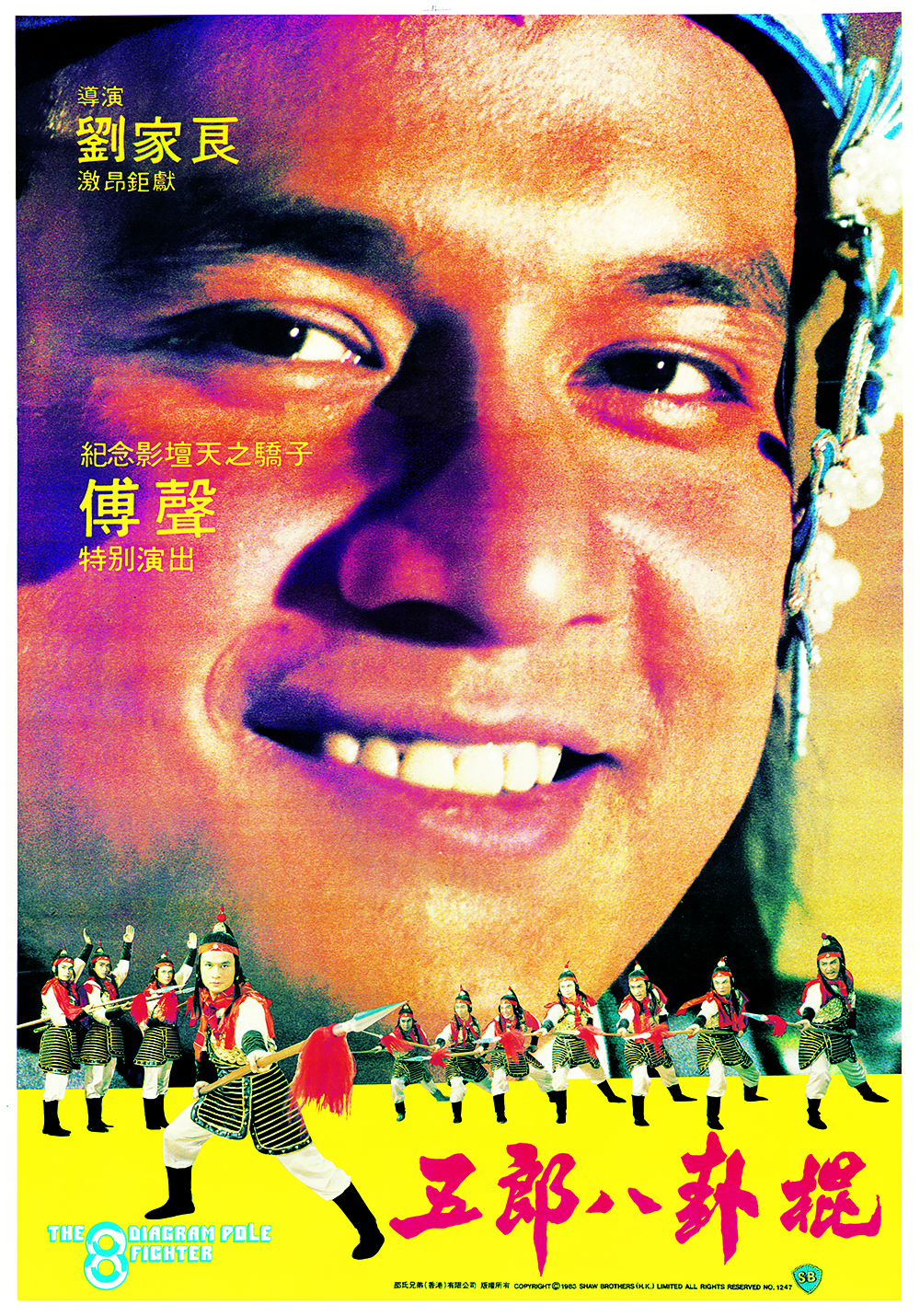片名:《陸阿采與黃飛鴻》
上映年份 :1976年
《陸阿采與黃飛鴻》是劉家良導演最早執導、兼任武術指導的作品之一。全片圍繞傳奇功夫大師黃飛鴻,劉家良承自父親劉湛的虎鶴雙形拳正是由黃飛鴻所創立。
此片取材自民間故事,相傳黃飛鴻跟從武術大師陸阿采習武,在電影中劉家良塑造出一個全新的黃飛鴻:年輕,勇猛,英俊,完全推翻了關德興演繹的成熟形象。
劉家良繼執導首部作品《神打》(1975)大獲好評,一年後拍成《陸阿采與黃飛鴻》。此片涵蓋所有劉氏電影的經典元素,除了開場帶來豐富的視覺享受、場景及道具布置精細且別具風格外,故事情節乃取材自洪拳民間傳說,高潮迭起,當然還少不了精心設計、極具欣賞價值的武打場面,完美地揉合藝術與功夫。劉家良與徒弟劉家輝決鬥的場面更展示出前者身為武術指導及功夫演員的過人才華,堪稱功夫電影界最經典片段之一。
Challenge of the Masters (1976)
Challenge of the Masters is among the earliest films Lau Kar Leung directed and fight-choreographed. The subject matter is the coming of age of legendary kung fu grandmaster, Wong Fei Hung, who created the “Tiger and Crane style” of Lingnan Hung Kuen.
Inspired by a story that Wong Fei Hung learnt martial arts directly from the legendary master Luk Ah Choy, in this film Lau created a brand new image of Wong Fei Hung, young, bold and handsome, completely overturning Kwan TakHing’s earlier, more mature, representation. Riding on Lau Kar Leung’s debut directorial success with Spiritual Boxer (1975) a year earlier, Challenge of the Masters has all the elements of a classic Lau Kar Leung film, with a visually engaging opening, intricate and stylized stage sets, a dramatic story drawn from Hung Kuen’s rich oral lore and, of course, artistically crafted fight scenes that are the perfect fusion of art and kung fu. Lau Kar Leung’s fight scene with his protégé Gordon Liu showcases his talent as fight choreographer and kung fu actor at his best, and is arguably one of the most memorable scenes in kung fu cinema.

